Amir-Hossein Yazdani-Abyaneh
Automatic Machine Learning for Multi-Receiver CNN Technology Classifiers
Apr 28, 2022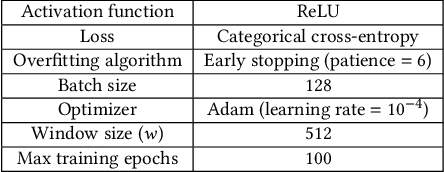
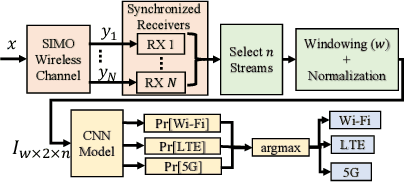

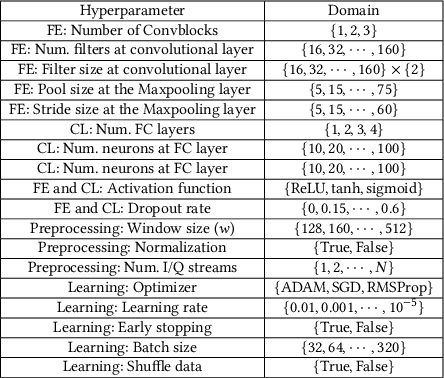
Abstract:Convolutional Neural Networks (CNNs) are one of the most studied family of deep learning models for signal classification, including modulation, technology, detection, and identification. In this work, we focus on technology classification based on raw I/Q samples collected from multiple synchronized receivers. As an example use case, we study protocol identification of Wi-Fi, LTE-LAA, and 5G NR-U technologies that coexist over the 5 GHz Unlicensed National Information Infrastructure (U-NII) bands. Designing and training accurate CNN classifiers involve significant time and effort that goes into fine-tuning a model's architectural settings and determining the appropriate hyperparameter configurations, such as learning rate and batch size. We tackle the former by defining architectural settings themselves as hyperparameters. We attempt to automatically optimize these architectural parameters, along with other preprocessing (e.g., number of I/Q samples within each classifier input) and learning hyperparameters, by forming a Hyperparameter Optimization (HyperOpt) problem, which we solve in a near-optimal fashion using the Hyperband algorithm. The resulting near-optimal CNN (OCNN) classifier is then used to study classification accuracy for OTA as well as simulations datasets, considering various SNR values. We show that the number of receivers to construct multi-channel inputs for CNNs should be defined as a preprocessing hyperparameter to be optimized via Hyperband. OTA results reveal that our OCNN classifiers improve classification accuracy by 24.58% compared to manually tuned CNNs. We also study the effect of min-max normalization of I/Q samples within each classifier's input on generalization accuracy over simulated datasets with SNRs other than training set's SNR and show an average of 108.05% improvement when I/Q samples are normalized.
CWmin Estimation and Collision Identification in Wi-Fi Systems
Aug 31, 2021
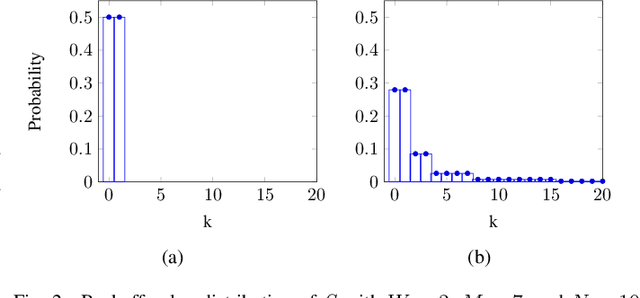

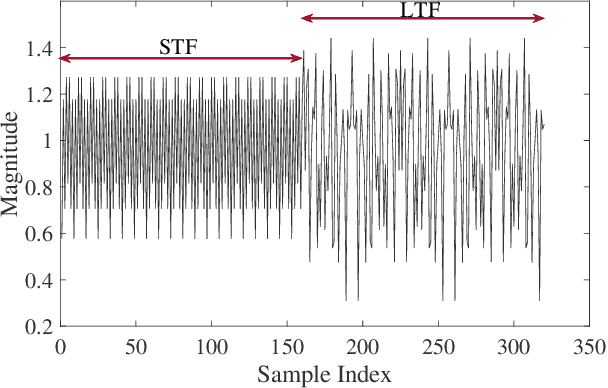
Abstract:Wi-Fi networks are susceptible to aggressive behavior caused by selfish or malicious devices that reduce their minimum contention window size (CWmin) to below the standard CWmin. In this paper, we propose a scheme called Minimum Contention Window Estimation (CWE) to detect aggressive stations with low CWmin's, where the AP estimates the CWmin value of all stations transmitting uplink by monitoring their backoff values over a period of time and keeping track of the idle time each station spends during backoff. To correctly estimate each backoff value, we present a cross-correlation-based technique that uses the frequency offset between the AP and each station to identify stations involved in uplink collisions. The AP constructs empirical distributions for the monitored backoff values and compares them with a set of nominal PMF's, created via Markov analysis of the DCF protocol to estimate CWmin of various stations. After detecting the aggressive stations, the AP can choose to stop serving those stations. Simulation results show that the accuracy of our collision detection technique is 96%, 94%, and 88% when there are 3, 6, and 9 stations in the WLAN, respectively. For the former WLAN settings, the estimation accuracy of CWE scheme is 100%, 98.81%, and 96.3%, respectively.
 Add to Chrome
Add to Chrome Add to Firefox
Add to Firefox Add to Edge
Add to Edge